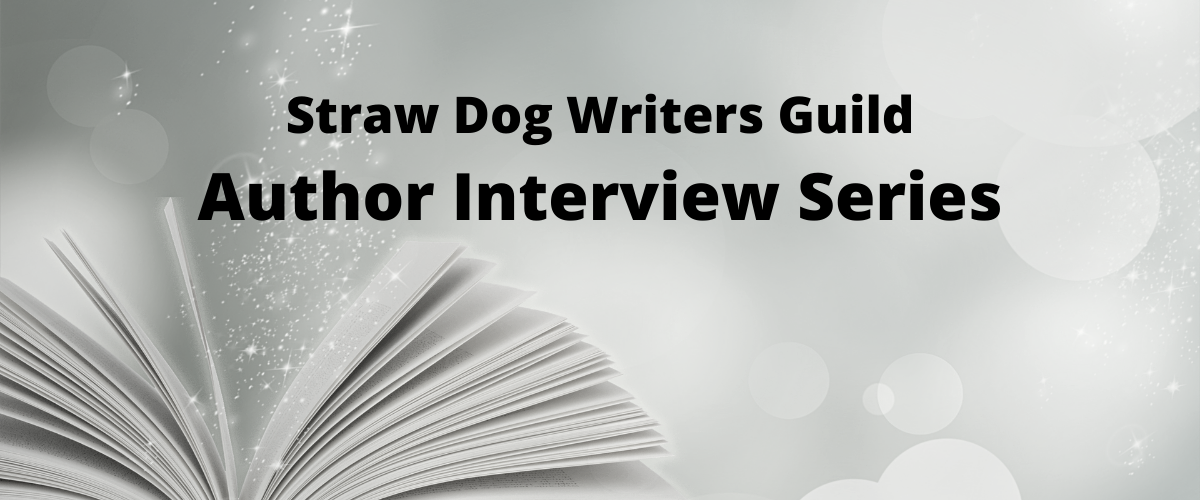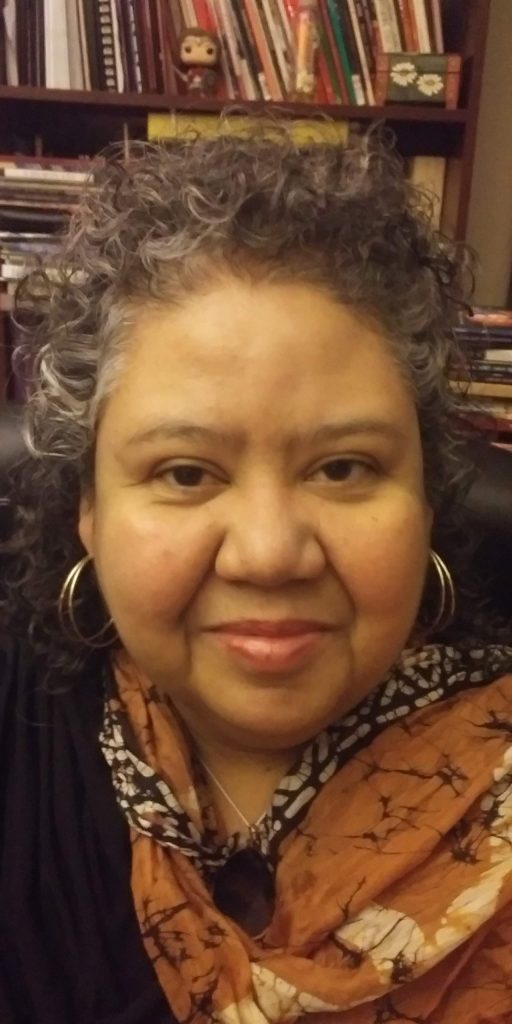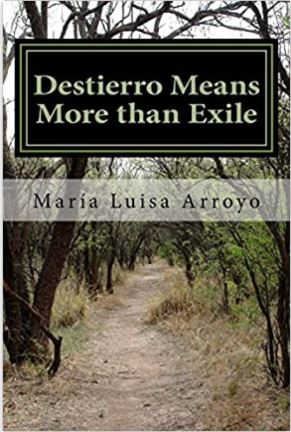Boricua poet and feminist intersectional educator María Luisa Arroyo’s poetry collections include Gathering Words: Recogiendo Palabras (Bilingual Press 2008), and the chapbooks Flight (2016) and Destierro Means More than Exile (2018). Her poems and essays have been published in a number of journals and magazines, and among her many awards, she was named Springfield’s Inaugural Poet Laureate in 2016, and received New England Public Radio’s Arts & Humanities Award in 2019. María Luisa is an Assistant Professor of Writing and First Year Studies at Bay Path University and serves as an Advisory Member on the Board of the New England Poetry Club. She has facilitated numerous poetry and writing workshops, and has written a guide to poetry for middle schoolers; Just Imagine in Springfield. Her poems, essays, and work in the classroom are inspired by her study of and lived experience in four cultures and their languages: American, Puerto Rican, German, and Iranian. She holds degrees from Colby College (BA), Tufts University (MA), Pine Manor College (MFA). At Harvard, she completed her coursework, passed her oral exams and submitted the first two chapters of her dissertation on two Jewish German poets, Hilde Domin and Mascha Kaleko, who were forced into exile during the Nazi period. María Luisa will be the featured reader for the October Straw Dog Writers Night Out/In, Tuesday the 5th at 7pm.
SDWG: You’ve written poems about hurricanes Irma and María, which devastated Puerto Rico in 2018. I happened to read them first as our own region was experiencing the effects of hurricane Henri, and then I reread them a day before hurricane Ida. The poems are specific to Puerto Rico and the tragedies of those storms, but I felt like they “hit home” so to speak, in an even larger way, and have brought their implications about climate change and environmental justice into even sharper focus. Could you say a little about how poems like these can act as harbingers or clarion calls, in addition to being laments and elegies?
MLA: Muchísimas gracias, Mark, for sharing how you received these poems through the lenses of climate change and environmental justice.
When I consider poems about environmental injustices, Patricia Smith’s 2008 poetry collection, Blood Dazzler, in response to Hurricane Katrina in 2005 immediately comes to my mind. I continue to be moved by the visceral urgency of those poems and Smith’s clarion call for us to become more intentionally responsible toward other human beings, citizens of our shared country, during and in the aftermath of natural disasters there and since.
My poems continue the call in another part of our country. Here we are, three years, family and friends in Puerto Rico and in the diaspora are still experiencing post-hurricane traumas. Economic injustice (think disaster capitalism versus authentically fortifying infrastructures in areas with hurricanes) is so interwoven with environmental injustice and climate change in New Orleans and in Puerto Rico.
SDWG: The ancient Arabic poetic form of ghazal is one you’ve adopted and adapted to your poems. Traditionally a type of ode expressed through short rhyming couplets, ghazals often seek to express combined feelings of love and loss – an ineffable longing, if you will. Can you tell us a little about how you came to the ghazal as a form for your expression, and why its origin in classical Arabic culture is powerful for you in a contemporary American context, say, in a poetic homage to Adrienne Rich?
MLA: Great question! For centuries, male poets crafted and sang ghazals in multiple Middle Eastern countries, such as Iran, Pakistan, and India not only in Arabic-speaking ones. Revered Persian poets Hafez and Rumi, my frames of reference, wrote ghazals, too. During my Solstice MFA Program, I had the joy of writing my thesis: “Poetic Transmutations: Three Types of American Ghazals” with my emphasis on American. The three types are inspired by the poets Adrienne Rich and Agha Shahid Ali.
When I first encountered Adrienne Rich’s approach for the type of ghazals she wrote and published, I understood her rationale. As she collaboratively worked with other invited poets to translate Urdu poet Mirza Ghalib’s ghazals into English to honor the 150th anniversary of his death, she transferred the essence of them into American English. When I researched Urdu sentence order, I learned that it is constructed the same as in Farsi: S O V (subject object verb). Musically and lyrically, that makes sense in Farsi and Urdu. Not in English.
As did Rich in the 1960s, I in the 1980s used her type of ghazal to refract the complexity of my identity during turbulent times. Many of this first type of ghazal appear in my 2008 collection, Gathering Words: recogiendo palabras..
Thanks to the poet Margaret Szumowski (1949-2013), a mentor at STCC and a friend, I learned about the poet Agha Shahid Ali’s two additional types of American ghazals. Central to them are, as you stated, this ineffable longing. The echo effect of the repeating refrains calls for emotional shifts in couplets meant to stand alone, the white space, a gulf between them. The difference? The embedded rhyme before the repeating refrain. Ali wrote both types, all the while insisting that the ghazal is as American as our use of the sonnet, the sestina, the haiku, and other poetic forms.
Learning this, I then adopted and adapted, as you stated, the ghazal because I find its form to be freeing. I am not bound by narrative; I am positively challenged to distill a shehr-e kucheek or micro-poem into two lines. Lastly, I marvel at the emotional leaps and friction between autonomous couplets.
Dring my reading on October 5, I will include three types of American ghazals that I have written.
SDWG: The work of other artists is a source of inspiration for you, as it has been for many poets, and yet ekphrasis presents the poet (and the reader) with special challenges. Can you say a little about how the ekphrastic impulse and process works for you? What is it about another work of art; one of the quilts in Faith Ringgold’s The Flag is Bleeding series, for example, that ignites the impulse? How do you grow or transform that into a work of art which both honors the source and is able to stand on its own?
MLA: Writing ekphrastic poems represents for me an additional type of creative freedom and engagement. I seek out art by female artists because in academic settings, I have been taught art by male artists. In fact, my first ekphrastic poems are in German in response to the life of and art by Hannah Hoech, the Mama of Dada.
With respect to Faith Ringgold’s paintings and quilts, many of them grip my imagination and will not let go. I write “socs” or streams-of-consciousness in response to the work of art. Sometimes I let it gestate. Other times, like with the poem, “The Flag is Bleeding, 2019”, I work on multiple drafts, allowing the image to guide the content and ultimate container or shape of the poem.
SDWG: Features of myth and fairy tale stand out in your poems, and they transform very real historic events, often ones which were particularly damaging to Puerto Rican women and children, such as forced english language education and the colonial gold mining industry. How do the elements of these kinds of ancient and universal stories help to clarify our understanding of relatively recent history?
MLA: Through my own family’s folklore and myth-making in Puerto Rican Spanish, I am recovering aspects of our cultural identity that I never encountered in history books or children’s books when I was growing up in Springfield in the ‘70s. Yes, I was born on the island. However, before I could walk, I was formally educated in Springfield, MA, where I was praised by monolingual White European and African American teachers for my American English at the cost of my Puerto Rican Spanish. When I moved back to Springfield with my son in 2004, I developed the habit of taking notes in Spanish to capture the stories of my Puerto Rican Spanish-speaking elders: my parents, my parents’ friends, and older relatives to better understand them and me, their living legacy and la poeta among them who writes everything down. In fact, two summers ago, I worked on a Spanish-language manuscript of poems with a working title of “creaciones: aflicciones”largely informed by the notes I took. Every morning, I woke up speaking Spanish and generated writing only in Spanish with some code-switching into Taíno, the language spoken by the indigenous peoples on the island.
SDWG: Goddesses are the central figures in many myths of creation and goddess figures populate your poems, but they are goddesses whose domains are the everyday conditions of women, or they reign over realms which have been riven with injustice and suffering. These goddesses have creative powers yet their stories are ones of everyday survival and endurance. Could you discuss the role of goddesses in your poems a little?
MLA: Another visual artist whose art is riveting to me is the multi-creative Puerto Rican artist, Myrna Arocho Martínez (1953-2019). When I read about her passing in the summer of 2019, I researched her art and was intrigued by her representations of goddesses and women. My poems with goddess figures are inspired by Arocho Martínez’s sculptures of goddesses and surreal paintings of women who seemed to reflect some of the creative and mental agony she experienced. When I reflected on the struggles of women in my family across generations, some of which I have witnessed and experienced firsthand in the last few years, I kept seeing them as broken goddesses who are struggling to rise.
SDWG: In conventional terms, exile and incarceration are very different forms of sentencing, yet both are official punishments for perceived crimes against a society (or clan, or caste, or any institution of hierarchy). The states of being unjustly cast out or imprisoned afflicts women, goddesses, and artists in your poems, and the actual conditions of exile or imprisonment are both literal and figurative. What do these women share which allows them to overcome, or perhaps circumvent, unjust and repressive sanctions?
MLA: The women, goddesses and artists in my poems find outlets to express their imperfect humanity. Somehow too they still understand their self-worth even in circumstances that alienate them and strive to render them invisible. They figure out tools for their own expression. Bind their hands and feet and eyes? They will still have the inner world of their imagination in their waking life and in their dreams.
SDWG: In our earlier conversation you said that as a professor at Bay Path University, you are primarily responsible for teaching “academic” or expository writing, and yet (with a wink) you teach them to be creative writers first. Why is writing creatively a prerequisite step in the process of writing to demonstrate or explain? How does this operate in your classes and workshops? Does this suggest that “knowing” starts with “feeling”? If so, can we apply the same process of responding creatively and then crafting knowledgeable positions for expression to other aspects of our lives?
MLA: In my 9th semester at Bay Path, I continue to marvel at students’ responses to low-stakes creative writing prompts inspired by a poem, essay, or short story assignment.
For years, that was the approach I used to write academic papers as an undergraduate in English and German and as a graduate student, in German. This enabled me to connect with my visceral responses to a literary or visual work of art.
Writing creatively means wild freedom with an understanding of writing conventions whereas writing academically means an understanding of and adherence to writing conventions. Both serve a purpose and different audiences. That additional creative writing step helps students, even those who exclaim, “Professor, I’m not creative!” to further develop their writing voice, writing confidence, and writing signatures.
SDWG; Your fluency in Spanish, English, German, and conversational Farsi (along with their cultures) allows you tremendous range and scope of subject, form, voice, and diction, in addition to the many sources of inspiration that you certainly find in them. Can you share some ways that these languages overlap for you (consciously, or perhaps not) in terms of your writing process? For example, how does your understanding of Farsi inform a line of poetry that you write in Boricua Spanish and then translate to English? Does it ever become a problem of “too many choices”?
MLA: Mark, the languages never overlap in my initial writing process because my cultural experiences and my formal/informal education are so diverse. If anything, a person, a place, a photo, an article, a work of art, a memory or a dream will inspire me to write “socs” or streams-of-consciousness in the language that my imagination associates with the person or object of meaning. While revising, I read aloud the raw material, listening for the musical patterns in the language and paying attention to the emotional weight of the word in more than one language. That will lead me to intentionally code-switch in a line or to decide to keep it one language. When I am writing in Boricua Spanish, oftentimes, these are persona poems with lyrical speakers yearning to be heard and seen. If anything, my strongest poetry language, English, informs my lines in Boricua Spanish and in German. When I wrote the poems in “creaciones: aflicciones”, I was channeling the poet Lucille Clifton’s sparing writing style.
In Spring 2022, I am excited to experience 2 of my English-language poems commissioned by the Boston Opera Collaborative. I am among 9 poets who responded to their call for poems inspired by the German poet Heinrich Heine’s Dichterliebe series set to music under the theme, “Love in the Time of …” We were to emulate the length and flow of his poems as we wrote in English while tapping into contemporary themes.
SDWG: I understand you’ll be the featured reader for the October edition of the Straw Dog Writers Night Out series. What projects are you working on now? When and where can we expect to see more of your work? I’m sure you must be very busy with your classes at BPU, but are you planning any workshops for other writers or students?
MLA: I am working on finalizing one poetry manuscript in Spanish and one in English, all the while submitting individual poems from each to market for possible publications. My goal is to have a second full-length collection published.
When I self-published my chapbook, Destierro Means More than Exile, a tribute to 32 women poets, I envisioned writing essays that shared my creative journey with each of them. This past summer, I wrote my first one, “‘The Space Between Us’: An Epistolary Tribute to Poet Margaret Szumowski”, which I plan to send to creative nonfiction markets. My critical thesis, “Poetic Transmutations: Three Types of American Ghazal”is competing for my attention as well. I want to re-immerse myself in it to revise it with the plan to submit excerpts of it for publication.
As for workshops, because of my busy teaching schedule (4 courses), advising and faculty committee work, I am not planning to facilitate any workshops independently until the summer of 2022. In the meantime, I have been responding to invitations to read, to serve as a keynote speaker, and to give one-time workshops. For instance, I was invited to facilitate a virtual workshop, “Discovering Our Inner Poets”, on October 20th for the Mel King Institute. As part of Latinx Heritage Month, I read virtually as part of programming for STCC and HCC recently.
Contact and Access:
María Luisa Arroyo’s Website – Includes sample poems, board affiliations, and links.
María Luisa Arroyo at Amazon.com – With reviews, blurbs and sale access for her books.
Faculty Page at Bay Path University – A biography and educational philosophy.
**********************************************************
Interviewer: Mark Luebbers, Straw Dog Writers Guild member
Mark Luebbers is a teacher and writer living in Greenfield, Massachusetts. His work focuses on nature and the environment, the lives of eccentric and creative figures from history, and living in America. Mark has published poems in a number of journals and magazines in recent years, including The American Journal of Poetry, The Journal of Americana, Wayfarer Magazine, Apple Valley Review, Blue Line, and The Hopper. In 2018, Mark was nominated for two Pushcart Prizes. “Flat Light”, his first collection, was published in 2020 by Urban Farmhouse Press. “Citizens of Ordinary Time”, a collection of biographical and ekphrastic poems written in collaboration with Ben Goluboff, is forthcoming, also from UFP.


